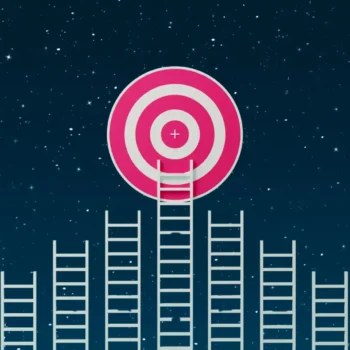You’ve poured your heart into creating amazing content, but getting people to actually engage with your blog – to comment, share, and become invested in what you have to say – feels like an uphill battle. Sound familiar? It’s a common struggle for new bloggers!
The good news is, there are simple (but powerful) strategies to make your posts irresistible to readers and increase blog engagement. In this post, we’re breaking down the key elements of engaging content. You’ll learn how to write in a way that sparks conversation, tailor your topics to what your audience truly cares about, and design your blog for a reader-friendly experience.
Ready to transform your posts into conversation starters and boost blog engagement? Let’s get started!
Content is King: Craft Compelling Content That Drives Engagement
Crafting compelling content is the foundation of a successful blog and the key to increasing blog engagement. In this section, you’ll discover strategies to make your writing captivating, audience-focused, and infused with your unique voice – the perfect recipe to increase blog interaction and build a loyal readership. To explore even more ways to enhance your blog, check out our ultimate guide to blogging.
Captivate with Content: Write Like You’re Having a Meaningful Conversation
Forget stiff, formal writing! Imagine you’re explaining your topic to a friend over coffee. Use relatable language, share personal anecdotes, and aim to educate, entertain, and engage your audience. This approach will make your blog posts stand out and feel more like a valuable two-way conversation, ultimately driving more blog engagement.
The Three E’s of Engaging Content:
- Educate: Provide practical tips, tutorials, or actionable insights. For example, if you’re writing about gardening, offer a step-by-step guide to growing tomatoes.
- Entertain: Sprinkle in humor, stories, or pop culture references (if appropriate for your niche). A well-placed anecdote can make your content more relatable and memorable.
- Engage: Ask questions, invite discussion, and create a sense of curiosity to boost reader interaction. For example, “What’s your favorite gardening tip? Share it in the comments below!”
Know Your Audience: Tailor Your Content to Their Needs
Understanding your ideal reader is essential for creating content they’ll truly connect with and increasing blog engagement. What are their pain points? What topics genuinely excite them? By tailoring your blog posts to address their specific needs and interests, you’ll improve reader experience and keep them coming back for more. If you’re struggling to attract readers in the first place, learn how to get your blog read with this guide.
Action Steps to Understand Your Audience:
- Surveys & Polls: Ask readers directly what they want to learn about. Tools like SurveyMonkey or Google Forms make this easy.
- Monitor Comments & Social Media: Pay attention to questions and discussions in your niche. What are people talking about? What are their concerns?
- Content Upgrades: Offer lead magnets (like ebooks, checklists, or templates) in exchange for valuable insights into your audience’s preferences.
Find Your Unique Voice: Let Your Personality Shine Through
In a crowded online world, having a distinctive voice helps you stand out and build a loyal following. Are you passionate and energetic? Witty and a bit sarcastic? Don’t be afraid to let your personality shine through in your writing. Readers connect with authenticity, and a consistent brand voice makes your blog a memorable destination. This authenticity can significantly improve blog engagement.
Let’s Make This Actionable!
Think of a recent blog post you wrote. How could you revise one sentence to make it feel more conversational and engaging?
Optimize & Design: Create a User-Friendly Experience to Encourage Engagement
First impressions matter, and a slow, clunky website can turn off readers even if your content is fantastic. This section is all about optimizing your blog’s technical aspects and creating a user-friendly design that complements your great content, boosting reader engagement and encouraging return visits. For more design tips, check out our post on creating a professional blog design.
Speed Matters: Prioritize Fast Loading Times to Increase Blog Engagement
In today’s fast-paced digital world, no one has time for slow-loading websites. If your blog takes too long to appear, visitors will bounce before even reading a single word. Here’s why speed is crucial for increasing blog engagement, and how to improve it:
- User Experience: Slow websites frustrate readers, negatively impacting their overall experience and reducing the likelihood of blog interaction.
- Search Engine Rankings: Google and other search engines factor in loading speed, meaning a slow site can hurt your visibility.
- Bounce Rate: High bounce rates (people leaving quickly) often signal to search engines that your content isn’t providing value, which can negatively affect your blog engagement efforts.
Practical Optimization Tips for a Faster Website:
- Optimize Images: Compress images before uploading to reduce file size without sacrificing quality. Use tools like TinyPNG or Squoosh.app.
- Choose a Reliable Host: Your web hosting provider plays a key role in site speed. Invest in quality hosting if needed.
- Utilize CDNs: Content Delivery Networks (CDNs) distribute your website’s content across multiple servers, improving loading times for users in different locations.
- Test Your Speed: Use tools like Google PageSpeed Insights or GTmetrix to analyze your website and get actionable improvement suggestions.
User-Friendly Design: Clean Layout & Easy Navigation for Better Engagement
A cluttered or confusing website design can discourage readers, even if your content itself is stellar. Let’s focus on creating a visually appealing and intuitive design that makes it easy for visitors to find what they need and enjoy their time on your blog, ultimately increasing blog engagement.
Key Elements of a User-Friendly Blog Design:
- Clear Hierarchy: Use headings, font sizes, and spacing to guide readers through your content, highlighting the most important elements.
- White Space: Don’t cram too much text onto the page. Let your content breathe for better readability.
- Intuitive Navigation: Simple, well-organized menus and a clear search function make it effortless for readers to explore your blog.
Make it Easy to Connect: Prominent Subscription & Social Follow Buttons
Don’t make readers hunt for ways to stay in touch! By placing subscription and social media buttons in visible locations, you encourage them to become part of your community and stay updated on your latest content, leading to increased blog engagement over time.
Tips for Effective Subscription and Social Media Buttons:
- Placement: Include buttons “above the fold” (the area visitors see without scrolling), as well as in your sidebar and footer.
- Design: Use contrasting colors or eye-catching icons to draw attention to these buttons.
- Incentives: Offer a compelling reason for readers to subscribe, such as exclusive content or subscriber-only discounts.
Reader Engagement Boost
Take 5 minutes to evaluate your current blog’s design. Is it visually appealing and easy to navigate? If not, make a list of two small changes you can implement right away to improve blog engagement.
Boosting Interaction: Turn Your Blog into a Thriving Community
A blog thrives when it becomes a space for dialogue and community. In this section, you’ll learn how to encourage comments, build anticipation for your content, and expand your reach through strategic outreach – all leading to increased reader engagement and a loyal following. If you’re looking for more ways to boost interaction, check out these simple blogging hacks.
Invite Conversation: Questions, Prompts & Community Building
Your blog posts shouldn’t be a one-way street. Actively invite readers to share their thoughts, experiences, and ideas in the comments section. This fosters a sense of community and provides valuable insights into what your audience cares about, ultimately increasing blog engagement. To encourage those initial comments and social shares, learn how to get your first blog comment.
Tactics to Encourage Comments and Discussion:
- Ask Open-Ended Questions: Avoid simple “yes” or “no” questions. Prompt readers to elaborate on their answers.
- Relatable Prompts: Encourage readers to share a personal experience related to the topic. For example: “Have you ever tried [topic-related task]? Share your tips or challenges in the comments!”
- Respond Thoughtfully: Acknowledge comments, answer questions, and keep the conversation flowing.
Build Anticipation: Hints, Series & Teasers to Keep Readers Coming Back
Give readers a reason to eagerly await your next post by creating a sense of anticipation. Here’s how to turn casual visitors into excited fans always checking for updates and increase blog engagement:
- Series: Break down complex topics into multi-part blog posts, leaving readers wanting more at the end of each installment.
- Teasers: Share sneak peeks of upcoming content, projects, or collaborations to pique curiosity.
- Contests or Challenges: Announce a contest with the results or winner reveal scheduled for a future post, creating a reason for readers to return.
Outreach is Key: Build Community Beyond Your Blog to Increase Engagement
Proactively engage with other bloggers, relevant forums, and social media platforms in your niche. This expands your reach, builds relationships, and helps you stay attuned to the conversations happening in your field, ultimately increasing blog engagement.
Benefits of Outreach for Bloggers:
- Increased Exposure: Get your content in front of a wider audience.
- Networking & Collaborations: Connect with like-minded bloggers and influencers for potential projects and cross-promotion.
- Stay Informed: Keep a pulse on industry trends, discussions, and what resonates with your target audience.
Reader Engagement Boost
Inspiration: Is there a blogger in your niche who does an exceptional job of interacting with their community? Share their name and what makes them stand out!
Additional Tips for Fostering Interaction:
- Set the Tone: Your own interaction style influences how readers engage. Be friendly, encouraging, and professional.
- Moderation Matters: Regularly monitor comments to prevent spam and maintain a positive, constructive space.
Consistency Wins: The Importance of a Regular Posting Schedule
Consistency is crucial for building reader loyalty and keeping your blog top-of-mind. Decide on a realistic posting schedule that you can stick to, whether it’s weekly, bi-weekly, or monthly. Let your readers know what to expect, and they’ll be more likely to return regularly for your valuable content, increasing blog engagement.
Bonus Tip: Track Your Progress!
To continue improving engagement on your blog, it’s helpful to track key metrics. Utilize tools like Google Analytics to monitor:
- Traffic: How many visitors are you attracting over time?
- Bounce Rate: Are readers leaving quickly or staying to explore?
- Comments: Are your interaction strategies leading to increased discussions?
- Social Shares: How often is your content getting shared on social media?
Analyzing this data will help you identify successful strategies, pinpoint areas for improvement, and celebrate your engagement wins!
Conclusion
By implementing the tips throughout this guide, you’ll transform your blog from a collection of posts into a vibrant, engaging destination. Remember, boosting reader engagement is an ongoing process. Here’s a recap of the key takeaways:
Captivate with Content: Write conversationally, educate, entertain, and engage. Know Your Audience: Tailor your content to their needs and interests. Optimize & Design: Prioritize user experience with speed and easy navigation. Boost Interaction: Invite conversations, build anticipation, and engage with your community. Be Consistent: A regular posting schedule builds reader loyalty.
Ready to see those comments, shares, and loyal readerships multiply?
Let’s put these strategies into practice! Start by choosing one tip from this guide to implement in your next blog post.
Share Your Success!
I’d love to hear about your engagement wins! Which strategies have made the biggest difference for your blog? Share your experiences in the comments below to inspire others in our blogging community.









No Comments
Leave a comment Cancel